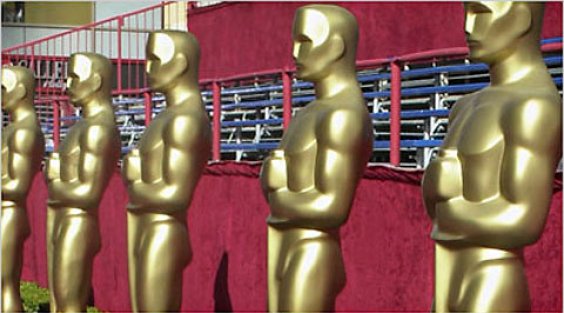
The Academy of Motion Pictures Arts and Sciences dropped a bombshell of Oscar news two years ago when the Best Picture field doubled from five to 10 films.
In a press release on Wednesday, AMPAS dropped yet another with the changed rule that the Best Picture field will now range anywhere from five to 10 films. This is based on the criteria that a movie must receive at least five percent of a first place vote to qualify for a nomination.
The Academy justified this decision by explaining that from 2000 to 2008, prior to the switch to 10 films, votes tabulated through this new method would have resulted in six, seven, eight or nine films. The idea is to find the middle ground of praising all of the highly loved films of the year without snubbing some and without padding out the field to include ones that aren’t worthy.
One other rule change affected the Best Animated Feature category. Originally, unless the list of eligible movies was 16 or above, nominees were limited to three films. Now if the list falls in between 13-16, there will be four nominees.
But back to the matter at hand.
The thing that concerns me about this new ruling is how it will affect Academy members’ voting choices. The original process for selecting the Best Picture nominees is a long and complicated process (explained very helpfully if a little long, here) that involves math and magic numbers. The long and short of it however is that voters list in order of preference their top 10 movies of the year and any given ballot casts one vote for the movie that needs it most.
Originally, movies that received no number one votes were immediately eliminated from contention. Now, any movie that receives lower than five percent of the number one votes will be eliminated. This makes putting a movie in the number one spot extremely important, especially for less than popular movies.
For instance, in the mock example that Entertainment Weekly did to pick the Best Picture nominees, the acclaimed films “Waiting for Superman” and “Animal Kingdom” received no number one votes, and were eliminated despite many other mentions. But if they had received just one number one vote, those otherwise less overwhelmingly popular films receive some much needed attention. But in this new system, it is very likely that a large crowd would back, say, “The Blind Side,” to ensure it got nominated, despite not being anyone’s real choice for Best Picture of the year.
This new system seems to help populist films more than it does smaller fares. Some of the benefit of the 10 nominees these past years was seeing “A Serious Man,” “An Education,” “Winter’s Bone” and “127 Hours” squeeze in their surprise nominations, despite little actual chance of winning. And the reason they were nominated is because they were some of the 10 best movies of the year.
Now the award for Best Picture will better be considered, “Top films that met an arbitrary criteria for popularity and greatness.”
There’s much less of a sense that any movie other than the few everyone agrees is great, if not the best, will have any shot of being nominated. Hypothetically, that would also weed out the less than critically acclaimed films, but my thought is that it would weed out foreign films, documentaries, indie films and any other non-studio production that not every single voter got a chance to see.
Regardless, fixing the Best Picture field is the least of the Oscars’ problems. This year’s abysmal telecast won’t be fixed based on the number of nominees but requires a complete overhaul in presentation, hosts, etc.
Second, the categories that need the most work are the funky rules for Best Foreign Language Film, Best Documentaries, Best Original Score and Best Original Song.
Foreign countries can only submit one film on behalf of their entire country, so well known favorites in a given year from across the world get snubbed before they’re even out of the gate.
Documentaries, both features and shorts, have a limited qualification calender, so if your movie gets a theatrical release later or earlier than necessary, you’re out of luck. This is actually being tinkered with to expand the window to 15 months, but we’ll see if anything actually changes come Oscar time.
The Best Original Score and Best Original Song categories have stringent policies that say if a score includes pre-existing music, it does not qualify. This became truly controversial when “Black Swan” didn’t receive a nomination because, go figure, it had to include music from Swan Lake in a movie about adapting the famous ballet (Hans Zimmer got away with using parts of an Edith Piaf song for “Inception,” but never mind). And Best Song is the same way, meaning that if a song was written for something else first, it can’t qualify, and if the score happens to include other unoriginal works, it’s also disqualified. Case in point, last year only featured four nominees as the Academy scraped the bottom of the barrel to find films that did not conflict with this absurd ruling. The only time a major exception has been made is when “Falling Slowly” was nominated and won the Oscar for “Once” in 2007, despite being written by the same artists on an earlier album.
It’s hard to know how any of these changes will help or hurt the awards ceremony or their eventual outcome. But there is one thing that did not change: the very much proposed idea that the ceremony should be pushed to late January rather than late February or early March.
The Academy announced in the same press release that nominations will be announced on January 24 and the ceremony is set for February 26.